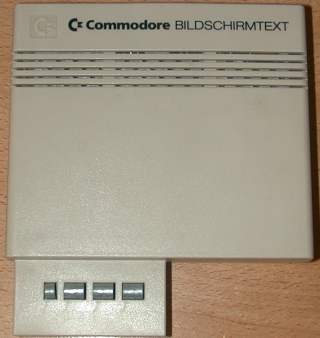
BTX is an abreviation for the german word "Bildschirmtext". It was something like the french MiniTel, operated by the famous "Deutsche Bundespost". Like most other things operated by the "Deutsche Bundespost" (DBP), it did not work very well and was absolutely overpriced. As a result, the system did never fullfil the expectations, and even in the best days there were only some 100.000 users.
The DBP expected a user to buy an expensive BTX device and to pay monthly fees for beeing allowed to participate in BTX. The result of this was a very limited user count and a bad image, since there was a high percentage of "redlight" services.
To help market the BTX service, the DBP tried to convince computer manufacturers to sell special "BTX decoders" (an adapter card plus a BTX software) because these adapter cards could be sold cheaper than the standalone devices originally developed. One of the result was the Commodore BTX decoder for the C64, which was the best selling home computer in these days.
One of the largest German manufacturers of telco equipment is Siemens. And in fact, the Commodore BTX Decoder was manufactured by Siemens and just labeled as a Commodore product. Commodore did this with several other products, namely printers, which were often manufactured by Epson or other printer companies.
Unfortunately, I did not open the device when I made these photos a few years ago. So you have to live without a look into the decoder - at least until I find the time to do some additional snapshots.
Richard Atkinson Richard.Atkinson@cl.cam.ac.uk has made nice photos from both versions of the BTX decoder (yes, there were two versions, and I do have both of them, but I forgot that when I wrote the text above - I'm an old man, please bear with me). The link http://student.cusu.cam.ac.uk/~rga24/ is dead - if you know where to find his old page, please let me know.